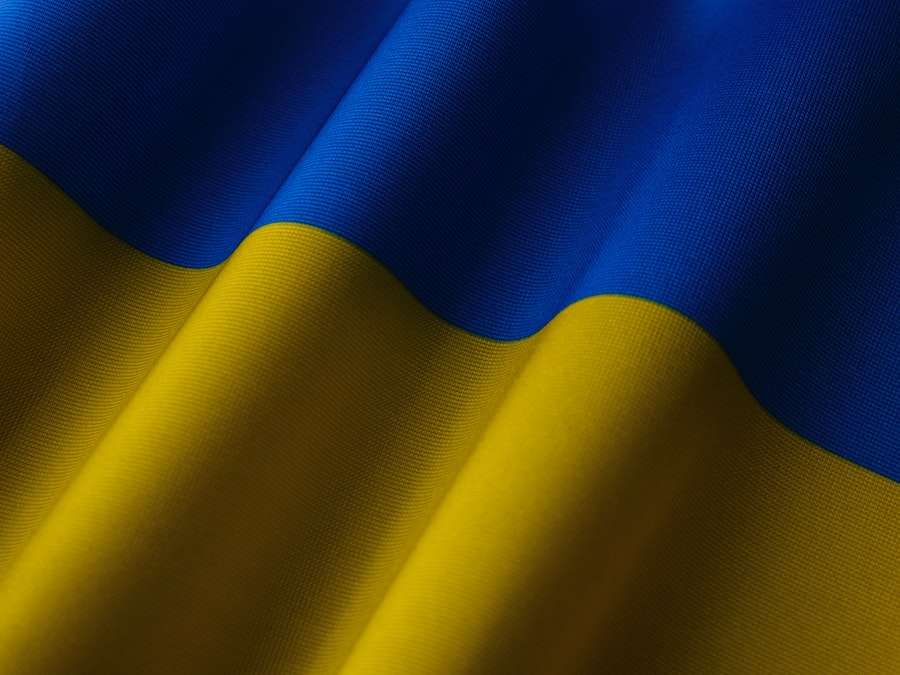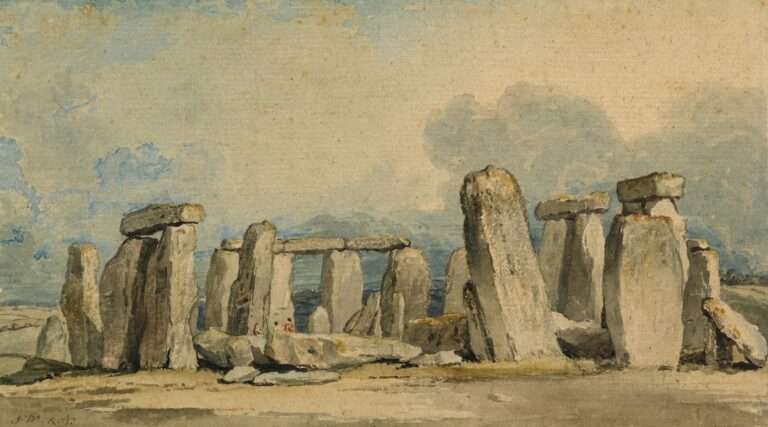Color Blue Symbolism: The Calming Hue

Blue is a color that holds a special place in our lives. It is a color that is often associated with calmness, tranquility, and reliability. From the deep blue of the ocean to the vast expanse of the sky, blue is a color that is prevalent in the natural world. It has also played a significant role in various aspects of human culture, from art and fashion to religion and language. In this article, we will explore the history, psychology, nature, art, religion, fashion, marketing, science, language, and culture of the color blue.
The History of Blue: From Ancient Times to Modern Day
The origins of blue pigments and dyes can be traced back to ancient civilizations. One of the earliest known blue pigments is Egyptian blue, which was used by the ancient Egyptians as early as 3000 BCE. This pigment was made from a mixture of silica, lime, copper, and an alkali such as natron. It was used to create vibrant blue hues in paintings and pottery.
Blue also held great significance in other ancient civilizations. In Mesopotamia, blue was associated with the gods and was often used in religious art and architecture. In ancient Greece and Rome, blue pigments were made from minerals such as azurite and lapis lazuli. These pigments were highly prized and were used to create beautiful works of art.
In the Middle Ages, blue pigments became more widely available with the discovery of ultramarine. This pigment was made from grinding lapis lazuli into a fine powder. It was used by artists such as Leonardo da Vinci and Michelangelo to create stunning blue hues in their paintings.
The Psychology of Blue: How It Affects Our Emotions and Mood
Blue is often associated with feelings of calmness and tranquility. It has a soothing effect on our emotions and can help to reduce stress and anxiety. This is why blue is often used in bedrooms and other spaces where relaxation is desired.
Blue is also associated with trust and reliability. It is often used in corporate logos and branding to convey a sense of professionalism and dependability. Many banks and financial institutions use blue in their logos to instill a sense of trust in their customers.
However, too much blue can have a negative effect on our emotions. It can be perceived as cold and distant, and can even evoke feelings of sadness or melancholy. This is why it is important to use blue in moderation and balance it with other colors to create a harmonious environment.
Blue in Nature: Exploring the Connection Between Blue and the Natural World
Blue is a color that is prevalent in the natural world. It can be seen in bodies of water such as oceans, lakes, and rivers, as well as in the sky. The color of water appears blue due to the way that light interacts with the molecules in the water. When sunlight hits the water, it is absorbed by the molecules and then scattered in all directions. The blue light is scattered more than other colors because it travels in shorter, smaller waves. This is why we perceive water as being blue.
The color of the sky also appears blue due to a similar scattering effect. The Earth’s atmosphere contains tiny particles such as dust and molecules such as nitrogen and oxygen. When sunlight passes through the atmosphere, it is scattered by these particles and molecules. The shorter, smaller blue wavelengths are scattered more than the longer, larger red wavelengths, which is why we see the sky as being blue.
Blue also plays a role in attracting pollinators to flowers. Many flowers have evolved to produce blue pigments to attract bees and other insects for pollination. Bees are particularly attracted to blue flowers because they can see ultraviolet light, which makes blue flowers appear even more vibrant to them.
Blue in Art: The Significance of Blue in Paintings, Sculptures, and Other Art Forms
Blue has been used in art for centuries and has played a significant role in various art movements. In the Renaissance, artists such as Leonardo da Vinci and Michelangelo used blue pigments such as ultramarine to create depth and richness in their paintings. Blue was often used to depict the sky and water, as well as to create a sense of distance and perspective.
In the Impressionist movement, artists such as Claude Monet and Pierre-Auguste Renoir used blue to capture the fleeting effects of light and atmosphere. They used a technique called “broken color” to create the illusion of shimmering light and movement. Blue was often used to depict the sky, water, and shadows.
Blue has also been used symbolically in famous works of art. In Vincent van Gogh’s “Starry Night,” blue is used to represent the night sky and the artist’s emotional state. The swirling blue brushstrokes convey a sense of movement and turbulence, reflecting van Gogh’s inner turmoil.
Blue in Religion: The Symbolism of Blue in Different Belief Systems

Blue holds great significance in various religious traditions around the world. In Christianity, blue is often associated with the Virgin Mary. It is used to represent her purity, humility, and devotion. Blue is also associated with heaven and is often used to depict the sky and celestial beings.
In Judaism, blue is a sacred color that is associated with God’s presence. The color blue is mentioned numerous times in the Bible, particularly in relation to the construction of the Tabernacle and the High Priest’s garments. Blue was used to dye the threads of the tzitzit (fringes) on Jewish prayer shawls, symbolizing God’s commandments.
In Islam, blue is associated with paradise and is often used to decorate mosques and other sacred spaces. Blue tiles are commonly used in Islamic architecture to create intricate geometric patterns and designs.
In Hinduism, blue is associated with the god Krishna. He is often depicted with blue skin, symbolizing his divine nature and his ability to transcend the material world.
In Buddhism, blue is associated with the Medicine Buddha, who is believed to have the power to heal physical and mental illnesses. Blue is also associated with wisdom and compassion.
In Native American and African religions, blue is often associated with water and the sky. It is seen as a symbol of life, purity, and spirituality.
Blue in Fashion: The Role of Blue in Clothing and Accessories
Blue has long been a popular color in fashion. It is a versatile color that can be worn in many different shades and tones. From light pastel blues to deep navy blues, there is a shade of blue to suit every skin tone and personal style.
Blue is often associated with qualities such as trustworthiness, dependability, and loyalty. This is why many professionals, such as doctors, lawyers, and bankers, choose to wear blue suits or uniforms. Blue is also a popular color for uniforms in the military and police force.
Different shades of blue can have different meanings and associations. Light blue is often associated with calmness and tranquility, while dark blue is associated with authority and power. Navy blue is often seen as a more formal and sophisticated color, while royal blue is seen as more vibrant and energetic.
Blue also holds cultural significance in traditional clothing. In many cultures around the world, blue is used in traditional garments to represent cultural identity and heritage. For example, in India, blue is often used in traditional sarees and other garments. In Japan, indigo-dyed fabrics are highly prized for their deep blue hues.
Blue in Marketing: How Blue is Used to Convey Messages in Advertising and Branding
Blue is a color that is often used in marketing and advertising to convey specific messages and associations. It is a color that is associated with trust, reliability, and professionalism. Many companies use blue in their logos and branding to instill a sense of confidence and dependability in their customers.
Blue is particularly popular in the technology industry. Many tech companies, such as IBM, Intel, and Dell, use blue in their logos to convey a sense of innovation and expertise. Blue is also commonly used in the healthcare industry to convey a sense of trust and reliability.
However, it is important to note that overusing blue in marketing can have negative effects. Too much blue can be perceived as cold and distant, and can even evoke feelings of sadness or melancholy. It is important to use blue in moderation and balance it with other colors to create a harmonious and engaging visual experience.
Blue in Science: The Science Behind the Color Blue and Its Properties
The color blue has its roots in physics and chemistry. Blue light is part of the visible light spectrum, which consists of different wavelengths of light that our eyes can perceive. Blue light has a shorter wavelength and higher frequency than red light.
The color of an object is determined by the way that it interacts with light. When light hits an object, it can be absorbed, reflected, or transmitted. The color that we perceive is the result of the wavelengths of light that are reflected back to our eyes.
Blue pigments and dyes are created using various chemical compounds. For example, Egyptian blue was made from a mixture of silica, lime, copper, and an alkali such as natron. Ultramarine was made from grinding lapis lazuli into a fine powder.
Blue has also been used in scientific research and experiments. For example, blue light therapy has been used to treat certain skin conditions such as acne. Blue light has also been used in the field of optogenetics, which involves using light to control the activity of neurons in the brain.
Blue in Language: The Use of Blue in Idioms, Expressions, and Proverbs
The color blue has found its way into our language through various idioms, expressions, and proverbs. These phrases often use the word blue to convey different meanings and associations.
For example, the phrase “feeling blue” is often used to describe a feeling of sadness or melancholy. This expression may have originated from the association of blue with coldness and distance.
Another common expression is “out of the blue,” which means that something unexpected or surprising has happened. This expression may have originated from the association of blue with the sky, which can suddenly change from clear to stormy.
There are also many proverbs and sayings that use the color blue to convey different meanings. For example, “once in a blue moon” is used to describe something that happens very rarely. This expression may have originated from the association of blue with rarity and uniqueness.
Blue in Culture: The Significance of Blue in Different Cultures Around the World
Blue holds great significance in different cultures around the world. It is often associated with specific cultural traditions and practices.
In Chinese culture, blue is associated with immortality and longevity. It is often used in traditional Chinese art and ceramics to depict scenes from nature.
In Mexican culture, blue is associated with the Virgin Mary and is often used in religious art and iconography. Blue tiles are also commonly used in Mexican architecture to create vibrant patterns and designs.
In African culture, blue is often associated with spirituality and protection. It is used in traditional clothing and jewelry to ward off evil spirits and bring good luck.
In Native American culture, blue is associated with water and the sky. It is seen as a symbol of life, purity, and spirituality. Blue beads and feathers are often used in Native American art and regalia.
In conclusion, blue is a color that holds great significance in various aspects of our lives. It has a calming and soothing effect on our emotions and is often associated with trust and reliability. Blue is prevalent in the natural world, from the deep blue of the ocean to the vast expanse of the sky. It has played a significant role in art, religion, fashion, marketing, science, language, and culture. Whether it is used to create beautiful works of art or to convey a sense of professionalism in branding, blue is a color that continues to captivate and inspire us.
If you’re interested in exploring the symbolism of blue, you might also find the article on the symbolism of the moon fascinating. The moon has long been associated with various meanings and interpretations across different cultures. From representing femininity and intuition to symbolizing emotions and cycles, the moon holds a significant place in symbolism. To delve deeper into this topic, check out this article on the symbolism of the moon.
FAQs
What is blue symbolism?
Blue symbolism refers to the use of the color blue to represent certain ideas, emotions, or concepts in art, literature, religion, and culture.
What are some common meanings associated with the color blue?
Some common meanings associated with the color blue include calmness, serenity, trust, loyalty, wisdom, intelligence, stability, and depth.
What are some examples of blue symbolism in art?
Examples of blue symbolism in art include the use of blue to represent the sky, water, or the heavens, as well as the use of blue to convey emotions such as sadness or melancholy.
What are some examples of blue symbolism in religion?
In religion, blue is often used to represent the divine or the spiritual realm. For example, in Christianity, blue is associated with the Virgin Mary, while in Hinduism, blue is associated with the god Krishna.
What are some examples of blue symbolism in literature?
In literature, blue is often used to represent emotions such as sadness or melancholy. For example, in F. Scott Fitzgerald’s “The Great Gatsby,” the character of Jay Gatsby is described as having “blue gardens” that represent his longing for the past.
What are some cultural associations with the color blue?
In Western culture, blue is often associated with boys and masculinity, while in Eastern cultures, blue is associated with femininity and the yin energy. Blue is also the color of many national flags, including the United States, France, and Greece.





